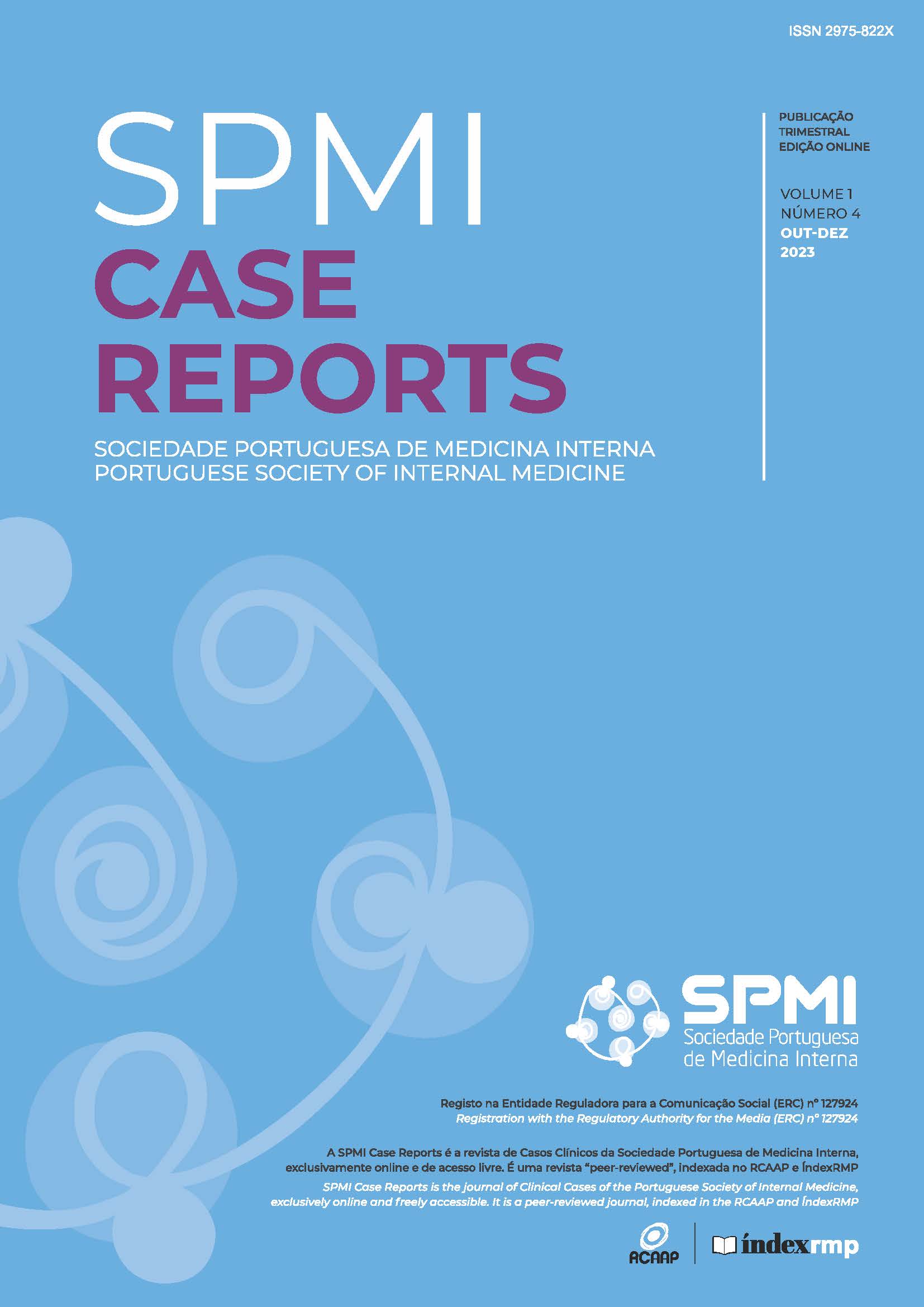Um Caso de Loxoscelismo em Portugal
DOI:
https://doi.org/10.60591/crspmi.115Palavras-chave:
Anemia Hemolítica, Picada de Aranha/complicaçõesResumo
Em Portugal, existem duas espécies de aranha conhecidas como possíveis causadoras de doença em humanos, sendo uma delas a Loxosceles rufescens. A sua picada está associada ao desenvolvimento da síndrome denominada de loxoscelismo que pode assumir diversas formas, desde alterações cutâneas locais a anemia hemolítica, falência renal aguda ou coagulação intravascular disseminada.
Apresentamos o caso de uma mulher que, após a mordedura de uma aranha identificada como aranha violino, desenvolveu um quadro de alterações cutâneas com posterior envolvimento sistémico com anemia hemolítica grave. Recuperou após corticoterapia em alta dose.
Realçamos a importância da sensibilização para esta entidade, muitas vezes desconhecida, que deverá ser considerada no diagnóstico diferencial de lesões cutâneas típicas. Isto permitirá a rápida instituição de terapêutica, prevenindo a evolução para formas mais graves e potencialmente fatais da doença.
Downloads
Referências
Cardoso P, Almeida AP. Envenenamento por aranhas em Portugal, verdade ou mito? Acta Med Port. 2010; 23: 33-8
Andersen RJ, Campoli J, Johar SK, Schumacher KA, Allison EJ. Suspected Brown Recluse Envenomation: A case report and review of different treatment modalities. J Emerg Med. 2011; 41:e31-7. doi: 10.1016/j.jemermed.2009.08.055
Abbot DM, Brunetti E, Barruscotti S, Brazzelli V. Brown recluse (L. rufescens) can bite in Northern Italy, too: first case report and review of the literature. BMJ Case Rep. 2019;12:e230000. doi:10.1136/bcr-2019-230000
Sams HH, Hearth SB, Long LL, Wilson DC, Sanders DH, King LE. Nineteen documented cases of Loxosceles reclusa envenomation. J Am Acad Dermatol. 2001; 44:603-8. doi:10.1067/mjd.2001.112380
Lopes PH, Squaiella-Baptistao CC, Marques MO, Tambourgi DV. Clinical aspects, diagnosis and management of Loxosceles spider envenomation: literature and case review. Arch Toxicol. 2020, 94:1461–77. doi: 10.1007/s00204-020-02719-0
Vetter RS. Spiders of the genus Loxosceles (Araneae, Sicariidae): a review of biological, medical and psychological aspects regarding envenomations. J Arachnol. 2008, 36:150–1´63
Glenn JB, Lane JE, Clark EK. Arachnid envenomation from the brown recluse spider. Clin Pediatr. 2003;42:567-70. doi: 10.1177/000992280304200615
Robb CW, Hayes BB, Boyd AS. Generalized vasculitic exanthem following Loxosceles reclusa envenomation. J Cutan Pathol. 2007: 34: 513–4. doi: 10.1111/j.1600-0560.2006.00657.x
Downloads
Publicado
Como Citar
Licença

Este trabalho encontra-se publicado com a Licença Internacional Creative Commons Atribuição 4.0.




